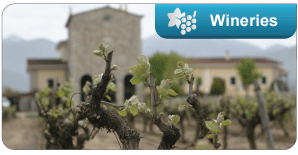Viticultural research in Greece
The 1980’s and the 1990’s witnessed the intensive growth of viticultural research in Greece, initially in ampelography. In actual fact, research in the specific field had started in the Laboratory of Viticulture of the Agricultural University of Athens in the 1930’s, focusing on the identification and classification of the principal Greek grape cultivars. However, the wine revolution of the 1980’s and the 1990’s brought to the fore the need for clonal selection and identification of native grape cultivars with improved response to technology. Although Greece at the time was intent on the exploration of chardonnay, cabernet sauvignon and merlot, many had already begun to realize that the future of Greek wine hung from the difference Greek grape varieties could made.
In the 1990’s, the EU began funding viticultural research in Greece, helping it expand. Studies began to appear at tertiary education level, such as the Agricultural University of Athens, the School of Agriculture at the University of Thessaloniki and the Chemistry Department at the University of Patras, and at research facilities such as the Mediterranean Agronomic Institute of Chania in Crete. Research focused on the polyphenolic composition of the Greek red grape cultivars in comparison to the composition of international red grape varieties. The Chemistry Department of the University of Ioannina also launched research on the protection of white wines against oxidation and the impact oxidation has on wine aromas. Other studies focused on substances that are beneficial to health, such as resveratrol, or detrimental, such as ochratoxins, given that Greek climatic conditions favor their growth in grapes. Participants in these research programs included wineries, be they private or cooperatives, and relevant agencies such as the Central Union of Wine Producing Cooperative Organizations of Greece (KEOSOE). Wineries held the role of end user in these programs, as stipulated by EU policies in research.


